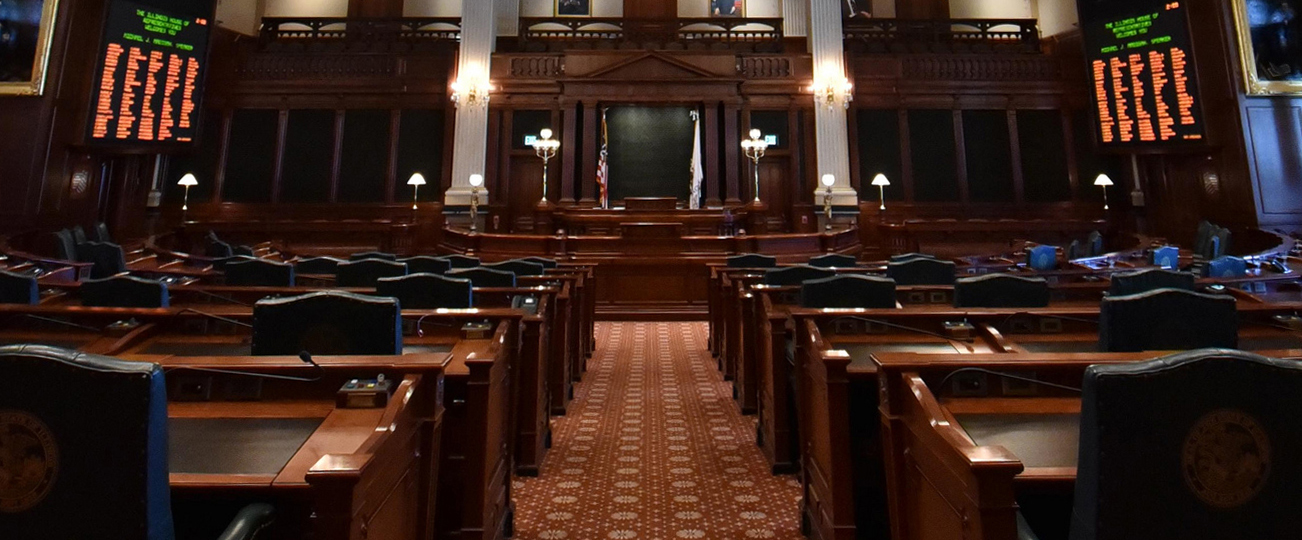Soaring over the prairies
More than a century before the Massachusetts minutemen took up arms at Lexington and Concord, America had a tradition of citizen-soldiers who were prepared to defend their homes and protect their communities.
Illinois was no different. In the early 1700s Illinois was held by the King of France, who issued a charter in 1718 creating a force of local militiamen to secure trading routes through his colony. Illinois militiamen joined George Rogers Clark in seizing Kaskaskia from the British during the Revolutionary War in 1779.
After independence and statehood, Illinois soldiers answered the country’s call again and again, supplying six regiments for the war with Mexico in the 1840s (and even capturing the prosthetic leg of the Mexican leader Antonio Lopez de Santa Anna). Tens of thousands of Illinois soldiers served in the cause of saving the Union in the Civil War. Illinois National Guardsmen fought in France’s Argonne Forest during the bloodiest battle involving Americans in World War I. In the Pacific in World War II Illinoisans rescued a future president of the Philippines from Japanese custody. Not to be outdone, Illinoisans in the European theater participated in a daring mission to rescue the King of Belgium from his Nazi captors.
During all this time, the armament of Illinois militiamen and guardsmen evolved from muskets and bayonets to machine guns and tanks. So it was only natural that during the 20th century the force would also take to the skies, soaring over the prairie in the most up-to-date military aircraft of the day.
The Illinois Air National Guard was formally created in 1956, even though Illinois guardsmen had been flying for at least 30 years prior. In its earlier days, the air guard flew reconnaissance and observation missions in support of ground forces. During World War II Illinois aviators patrolled above the waters near the Panama Canal, protecting the vital waterway from submarines.
When it became a separate command, the state-of-the-art fighter jet for the Illinois ANG was the F-84 Thunderstreak, though it wasn’t long before the Illinoisans moved to the F-86 Sabre, which had dominated the skies over Korean War battlefields.
Illinois’ 170th Fighter Squadron and 183rd Fighter Wing flew the F-86s until 1972, when they transitioned to the venerable Vietnam War workhorse, the F-4 Phantom.
One of those F-4 pilots was a young guardsman from Morrisonville named Wayne Rosenthal.
Rosenthal distinguished himself in Navigator flight school and earned the Husik Memorial Trophy which is awarded to the top aviator in each class. He accumulated over 3000 flight hours in the F-4 and eventually rose to the rank of brigadier general. After retiring from the Guard, Rosenthal ran for office and now represents the people of the 108th House District.
“The values of discipline, service and commitment I learned in the Illinois Air National Guard are the foundation of everything I’ve done in life,” Rosenthal reflected. “Whether in the skies or in the legislature, those principles guide me every day.”
While protecting the skies with fighters, the Illinois ANG also played an important logistical support role, operating the ubiquitous C-130H Hercules cargo aircraft and KC-135R Stratotanker aerial refueling plane. An Illinois ANG KC-135 of the 126th Air Refueling Wing became the first National Guard aircraft to fly a mission during which one plane re-fueled another in mid-air.
The F-4 fighters were retired from the Illinois ANG in 1989 when the 183rd Fighter Wing transitioned to more modern F-16 Fighting Falcons. The 183rd flew F-16s until 2008, when the wing’s mission was switched over to repair and maintenance.
Today, at Springfield’s Abraham Lincoln Capital Airport, which has been the headquarters of the Illinois Air National Guard for three generations, the 183rd Heritage Park displays one of each type of fighter jet operated by the Illinois Guard in its nearly 70-year history.
With the coming of the 21st century, Illinois Air National Guardsmen and Guardswomen continued soaring over the prairie, protecting the homeland and serving our state. The Illinois ANG played a vital role in responding to stateside natural disasters such as catastrophic flooding on the Mississippi River and to the destruction caused by Hurricane Katrina. At the same time, the Illinois ANG deployed to Afghanistan after the September 11 attacks and flew humanitarian missions all around the world.
Last year the Illinois ANG returned to its World War II roots after 80 years, participating in a multi-national exercise designed to secure the Panama Canal against hostile threats. This spring the Illinois ANG conducted a major readiness exercise to ensure their preparation to respond to an emergency on short notice.
“Service isn’t just something you do; it’s who you are,” Rosenthal said. “The Illinois Air National Guard taught me that, and it’s something I strive to live by every day.”


